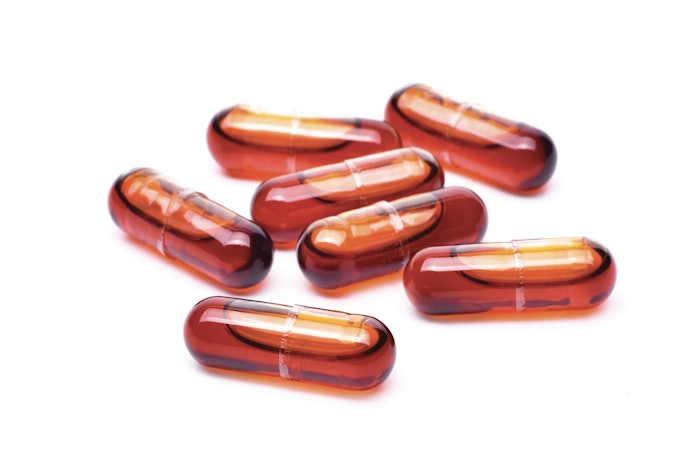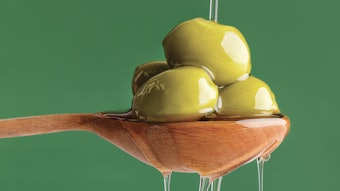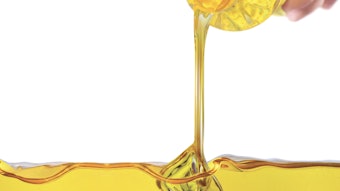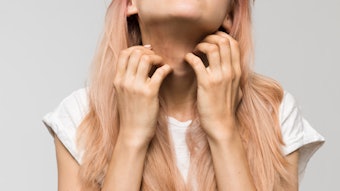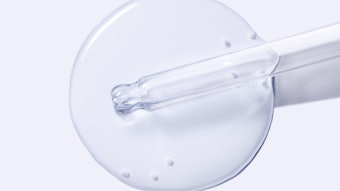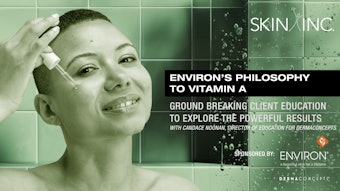Astaxanthin is the naturally occurring pigment responsible for the reds, pinks and oranges found in some plants, like algae, and animals like salmon, trout, krill and shrimp. "Astaxanthin is one of the world’s most powerful antioxidants—thousands of times stronger than vitamin C," says Patricia Pol, licensed esthetician for MYCHELLE. "It helps soothe and protect skin after treatments like peels, visibly reduces dark spots and uneven tone, and defends against future discoloration for a brighter, more radiant complexion."
This article is only available to registered users.
Log In to View the Full Article
Astaxanthin is the naturally occurring pigment responsible for the reds, pinks and oranges found in some plants, like algae, and animals like salmon, trout, krill and shrimp. "Astaxanthin is one of the world’s most powerful antioxidants—thousands of times stronger than vitamin C," says Patricia Pol, licensed esthetician for MYCHELLE. "It helps soothe and protect skin after treatments like peels, visibly reduces dark spots and uneven tone, and defends against future discoloration for a brighter, more radiant complexion."
It’s primarily found in the microalgae Haematococcus pluvialis. "Its [astaxanthin's] ability to protect skin from oxidative stress, reduce inflammation and support collagen integrity makes it a valuable ingredient in both topical treatments and nutritional protocols," adds Tammy Pahel, vice president of spa & wellness at Carillon Miami Wellness Resort. "For estheticians, incorporating astaxanthin into skin care regimens can enhance results for clients dealing with premature aging, hyperpigmentation and environmental damage. As the demand for holistic wellness grows, astaxanthin offers a bridge between inner health and outer beauty.”
Seeing Red
Astaxanthin protects against the free radicals that can potentially harm collagen and elastin, leading to wrinkles, sagging and hyperpigmentation, making it a valuable tool for well-aging. More than just protecting, astaxanthin also stimulates collagen production and improves elasticity for more youthful-looking skin, as well as improves skin regeneration and repair. When used in conjunction with a chemical peel, astaxanthin can be helpful for protecting post-peel skin, while chemical peels can allow products with astaxanthin to penetrate deeper. The combined collagen-boosting abilities of astaxanthin and chemical peels make this a synergistic combination for reducing the appearance of wrinkles and fine lines while improving elasticity and skin repair.
This pro-collagen carotenoid also strengthens the skin barrier, prevents moisture loss and can aid in sun protection (alongside, not instead of, sunscreen) by neutralizing free radicals generated by sun exposure.
Astaxanthin has anti-inflammatory properties and can inhibit melanin production, improving the appearance of hyperpigmentation and dark spots. When paired with a chemical peel for exfoliation, this can be particularly synergistic for evening skin tone.
So Good, You Can Bottle It
Astaxanthin is particularly popular as a serum, in overnight treatments and when used with other treatments, while being a favorite of brands that prioritize clean, natural ingredients, like Honua Hawaiian Skincare. "Our Astaxanthin is sourced from Kona, Hawaii [by] Cyanotech/Bioastin," says Melia Wade, director of marketing. "Our founder, Kapua Browning, a master esthetician of 20+ years took the ingredient internally first when she learned she could use it topically while taking [orally] to increase the benefits. She met with founder of the astaxanthin lab to learn how to use it topically to help with protection and repair of sun damaged skin. In Hawaii especially, many people struggle with this, so Honua uses it in [its] Hibiscus Beauty Booster—an antioxidant boost in a hyaluronic acid gel! We also use it in our Malu SPF Day Cream!"
I also commonly see astaxanthin used in moisturizers, in treatment-specific products and with vitamin C. Other uses include peri-orbital creams, masks for both the face and body and SPF products, making it adaptable for in-appointment treatments and retail potential. Spas can also benefit from astaxanthin in facial oils and post-facial soothing gels.
Other Wellness Benefits
Astaxanthin’s antioxidant properties make it conducive to supporting bone health. It can also help with age-related macular degeneration, which leads to vision loss in older adults, as well as dry eye symptoms and may help reduce the symptoms of age-related cognitive decline, making it useful in whole-body longevity plans. For your active clients, astaxanthin is also known for improving endurance and reducing muscle fatigue. There’s some research that shows astaxanthin can help reduce LDL cholesterol and improve cardiovascular health.
